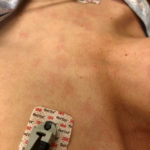By Pradip Kamat
An ideal sedative would have properties such as short context-sensitive half-life (quick onset, quick offset), elimination independent of organ function with no active metabolites, minimal depression of respiratory or cardiac systems, and inexpensive. Unfortunately, none of the commonly used sedatives used in pediatric procedural sedation are completely ideal. Sedation practitioners, therefore, commonly use a combination of medications to either augment the desired effects or decrease the adverse effects of the other. An interesting combination recently employed is the combination of dexmedetomidine and Propofol. Some thoughts below:
- Dexmedetomidine is a central alpha -2 inhibitor, which usually provides a moderate level of sedation and augments Stage 2 sleep. Patients are easily aroused with stimulus but will then drift back to sleep. It has mild analgesic effects but provides sedation and anxiolysis. A distinct advantage of dexmedetomidine is the drug’s ability to maintain hypopharyngeal tone, airway responsiveness and cause minimal respiratory depression.
Another advantage of dexmedetomidine is that it can be administered via a peripheral intravenous cannula (PIV), intranasally, buccally, and rectally. Intranasal use for short procedures obviating the need for PIV access is increasingly used for short imaging procedures.
Side effects include bradycardia (especially with a rapid bolus of high dose infusion) and blood pressure changes. It has been used mostly in shorter imaging procedures such as magnetic resonance imaging studies and computed tomography. Used alone, it does not provide the depth (results in frequent patient arousals) required for prolonged MRI studies such as imaging of the brain and spine with contrast.
Propofol is the usual go-to sedative for high-volume imaging centers that require a quick onset of drug action followed by a short duration of recovery time, thus facilitating rapid patient turnover. Propofol is given via a PIV (which can cause give rise to induction pain) as an initial bolus. Propofol has a rapid onset and provides deep sedation with amnesia and immobility-all desired effects for procedures such as biopsies and longer imaging studies. Propofol, however, lacks analgesic properties and must be combined with ketamine or fentanyl for painful procedures. While sedation practitioners love the quick onset and offset of action of propofol, the propensity for hypopharyngeal collapse, apnea, airway obstruction, and inability to maintain airway tone is undesirable, especially with patients who are prone to an upper airway obstruction such as those with developmental delay, neuromuscular weakness, obstructive sleep apnea, prematurity, etc. Propofol is also listed in the US FDA’s list of sedatives associated with potential neurotoxicity when used in children with a developing brain (i.e. children < three years of age). - It is best for patients with a high risk for hypopharyngeal collapse to avoid propofol bolus during induction. Boriosi et al. (Paediatr Anaesth 2017) compared the use of propofol alone with the combination of dexmedetomidine (slow induction at 1mcg/kg over ten minutes) followed by propofol infusion. The study investigators reported fewer sedation-related adverse events, mainly upper airway obstruction, although mean discharge time was slightly longer in the combination group.
- The use of dexmedetomidine for initial induction followed by propofol for maintenance is propofol sparing. It also prevents emergence and agitation, which can sometimes be seen with propofol. Dexmedetomidine is purported to have neuroprotective effects (Perez Z et al. Br J Anaesth 2017) and thus protect the brain of children < 3 years undergoing prolonged sedation or imaging procedures. Sedation practitioners should consider the use of the combination of dexmedetomidine and propofol in their sedation practice.
What are your thoughts? Continue the discussion in the blog comments.



Agree! Dexmedetomidine has so many uses in pediatric sedation and I have found it to be a valuable tool in my dental office anesthesia practice